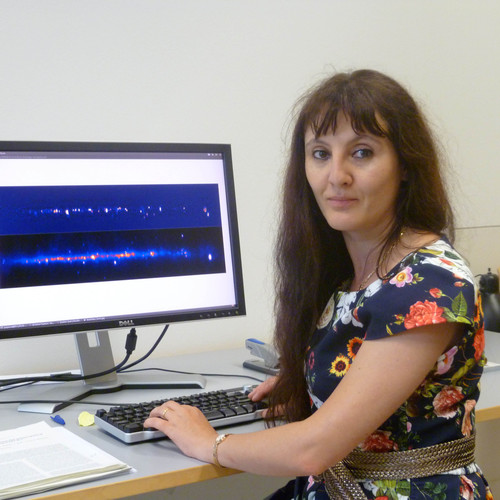
Dr Cristina Popescu, Reader in Astrophysics at UCLan’s Jeremiah Horrocks Institute, has been given the award for the project ‘Connecting the high and low energies views of the Milky Way’.
The £150,000 grant is the first success for UCLan with this funding scheme and will see Dr Popescu collaborate with the Max Planck Institute fuer Kernphysik in Heidelberg, Germany.
This award is recognition of the interdisciplinary nature of Dr Popescu’s research, and reflects her personal vision and aspiration of building a self-consistent theory of the low and high energy physical processes in galaxies.
One of the biggest and longest-lived mysteries in astrophysics that the Leverhulme project will address is the origin of the so-called cosmic rays. These are electrons and protons which criss-cross interstellar space at almost the speed of light and which carry colossal energies, up to millions of times higher even than the most powerful man-made accelerator can reach on Earth.
Cosmic rays are a major energetic constituent of the interstellar medium of the Milky Way and external galaxies. Because of the fantastic energies they carry they control key processes like star and planet formation and the processes governing galactic evolution. They promote chemical reactions in interstellar space, leading to the formation of complex and ultimately life-critical molecules. Despite this, more than 100 years following the discovery of cosmic rays by Victor Hess in a balloon experiment, we still do not know the origin of these particles.
This project will trace the location of the catastrophic events which created the cosmic rays, by looking where these particles are colliding with matter in our Milky Way.
“We will also use the collisions of cosmic rays with atoms and molecules in interstellar space”, explains Dr Popescu, “to actually count up how many atoms and molecules are present in our galaxy, which will be a new way of weighing the total gas mass in our Milky Way and in other galaxies. This is particularly important, as the gas provides the reservoir for producing new generations of stars in galaxies.”
Although cosmic rays cannot be seen directly, they carry so much energy that, through interactions, they can transfer this energy to other forms of matter, producing huge changes in the properties of the interacting matter.
For example, while moving with the speed of light through the interstellar gas of our Milky Way and other galaxies, they can lift up gas, changing the way stars and planets form, and ultimately life itself.
Understanding star and planet formation and the conditions through which life can form is a fundamental question that humanity faces.
Dr Popescu said: “Unravelling the origin of these colossal energy carriers, is of fundamental importance as it would make a huge difference whether they are produced by the monster black hole, that we know exists at the centre of the Milky Way, or by catastrophic explosions of stars, the so-called supernovae.
“For example, if the cosmic rays are produced by the dying stars in their final explosions, then this could impact on our own life on the Earth, should such a supernova explode in the vicinity of our solar system. Cosmic rays could then penetrate in the Earth’s atmosphere and completely transform the state of its gaseous constituents, making it unsuitable for life.”
The originality of this work consists in the fact that it proposes to solve this problem using a completely unique and counter-intuitive method. Thus, to understand the origin of the most energetic and hottest particles, it uses the least energetic and coldest particles as targets to indirectly probe the energy losses and therefore the energy of the cosmic rays. Working backwards through the chain of interactions and propagations, one can work out the original source of the cosmic rays.
Dr Popescu added: “To understand the enigmatic very hot cosmic rays we propose, paradoxically, to use the very cold gas, which is at a temperature of only a few tens of degrees above absolute zero. This very cold gas is too cool for it all to be seen directly, but is intermingled with dust particles which emit a characteristic radiation at long infrared wavelengths, from which the precise amount and distribution of the gas can be deduced.
“Both the very cold gas and the infrared photons interact with the cosmic rays, leading to a transfer of energy flowing from the hot to the cold. Our method will use this flow of energy to understand the origin of the cosmic rays.”
